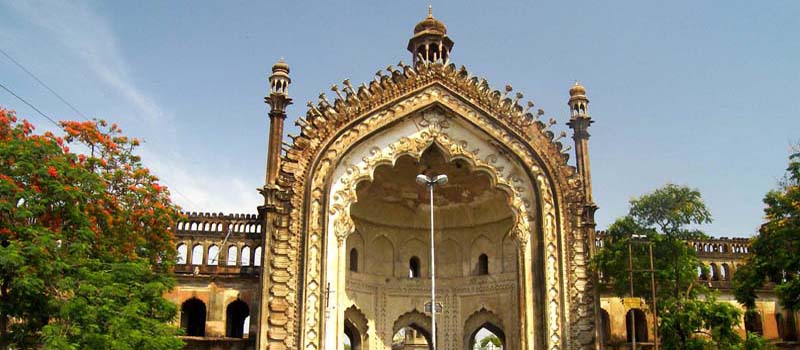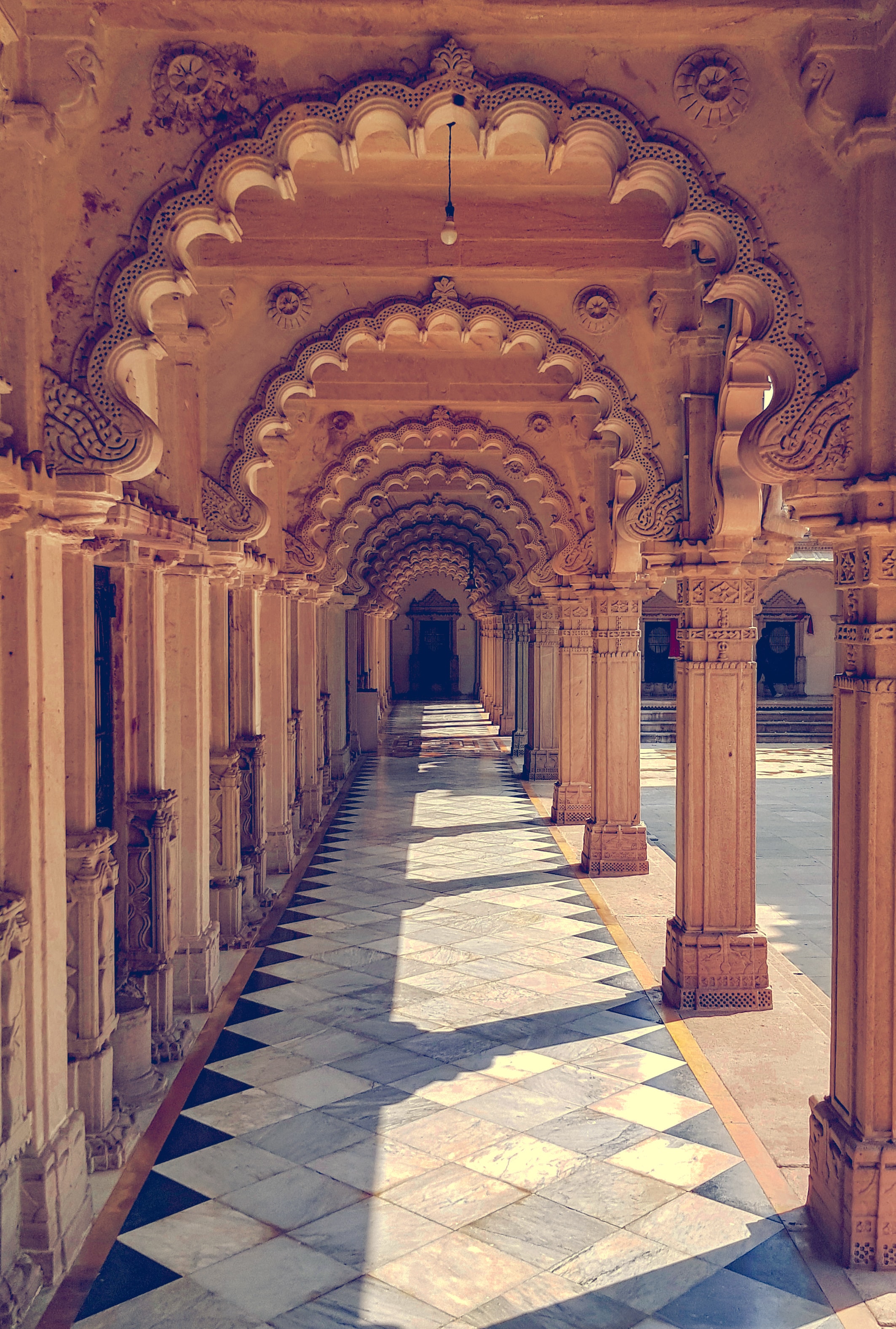Description
Rumi Darwaza is said to be influenced by a similar gateway which stands in present-day Istanbul in Turkey. The now Islam-based city was once the prosperous capital Byzantine of the East Roman Empire, and this tie of architectural influence led to the corruption of the word Rome and became Rumi in India.
Now a landmark for the city of Lucknow, the great Rumi Darwaza was once built keeping a very noble and thoughtful idea in mind by the then Nawab. In 1748, the Awadh region along with a large portion of North India was going through a terrible phrase of famine and depression.
Nawab Asaf-Ud-Daula thus decided to set on certain construction projects as a food-for-work campaign which would generate employment for the common people and thus help the economy as well people's standard of living to get better a bit. He engineered the making of Bara Imambara and along with that the towering gateway - Rumi Darwaza. It did not take long to build the structures. Within two years, the fruit of labour was gracing the gateway to the Old City of Lucknow which was quite a feat given the critical situations.
The architecture of Rumi Darwaza is distinctive and in sync with the Nawabi gharana popular in the Awadhi region. Unlike the Mughals, who used red stone, the Nawabs of Lucknow used limestone which was much easy for carving intricately detailed designs than hard stone. The top of the Rumi Darwaza at 60 feet height has a small octagonal place which is called the chhatri or umbrella – it looks over both sides of the gate from the absolute top. A staircase leads up to it, or so it did in the old days. So it can be assumed that this was either used for vigilance, or to light up the gate with a big lantern at night, which is the more popular history.
The whole structure of the massive door is decked with ornate patterns of flowers and leaves and other detailed designs that speak explicitly of the great craftsmanship of that time. It has four minarets at four corners, and it stretches out on both sides taking up almost the shape of a building rather than a gate.

More Details
The famous Rumi Darwaza is a striking gateway standing tall at sixty feet tall in the old city of
Lucknow. It lies between the Bara Imambara and Chota Imambara exhibiting ancient Awadhi
architecture. Built by Nawab Asaf-ud-Daula, it is also known as the Turkish Gate because it is
modelled after Bab-i-Humayun gateway in Turkey.
The creation of Rumi Darwaza has a very charitable reason behind it. When famine struck North India
during 1748, the then Nawab of Lucknow came up with a plan that would feed his countrymen as well as
give him something to cherish and be proud of. As per the plan, the Awadhi workers built the great
Rumi Darwaza for him, in exchange for everyday meal.
Rumi Darwaza in the heart of Lucknow looms over the busy everyday traffic of Lajpatnagar like an old
guardian angel that has seen the city rise and fall. Through the arch of the Rumi Darwaza runs
roadways to both sides and they remain busy, crowded and cacophonous all day long. The rush of
vehicles and the brunt of time have weakened it, but it still stands ever strong and majestic,
looking even more resplendent when lit up at night.
Highlights:Being located near the city's heart, reaching Rumi
Darwaza is not a trouble at all. Hire a rickshaw or a taxi, or a car from your hotel (if you don't
know your way around) and reach there in a jiffy. It is only 5.5 km from the Lucknow Junction which
is the nearest railway station.
Distance from Lucknow Airport: The distance between
Lucknow Airport (LKO) and Rumi Darwaza is 11 km.
Entrance fee: Free of cost.
Timing: Always open.
Location: 17/11, Hussainabad Road, Lajpat Nagar Colony,
Lajpat Nagar, Machchhi Bhavan, Lucknow, Uttar Pradesh 226003.
